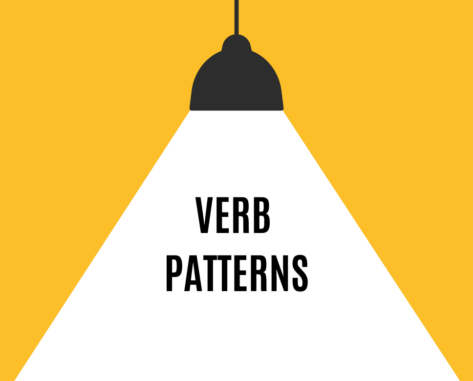LESSON OVERVIEW
Using this worksheet, you will teach your students some verbs that change their meanings when they are followed by a gerund or an infinitive. On top of that, there are two oral practice activities that will allow students to use the newly acquired knowledge but also challenge them to use their critical-thinking skills!
VERB PATTERNS
The worksheet focuses on the following verbs: remember, forget, try, regret and stop. First, students have to match the sentences halves in each pair and compare their meanings. Monitor and facilitate the process by asking questions about the verbs, and make sure students get the differences in meanings. Next, students complete some questions with the correct form of the verbs in brackets. After checking the answers, make them discuss the questions in pairs.
SPEAKING PART
The worksheet ends with an infographic showing various statistics related to retirement. Students have to talk about the information there and the probable causes and consequences behind that data. When discussing the data, students need to use verbs they’ve learnt during the lesson.
RELATED LESSON PLANS
This worksheet goes well with our lesson plan:
WORKSHEETS
Subscribe to unlock these and many other Standalone lesson with the Premium plan
Subscribe














Hi. This is a great lesson, but the last activity seems to be blocked by a larege ad – in all three of the lesson options – student version, teacher’s, and e-lesson. Can this be fixed? Thank you in any case. From one of your biggest fans 🙂
Hi Sharon! Thanks for reaching out to us! Actually, this is not an ad, but a part of the lesson. It’s an infographic about retirement that students need to analyze and talk about. Greetings 🙂
It’s a great lesson! I wish there were more lesson on topic of gerund vs infinitive practice, cause students seem to straggle with it and it requires a looot of practice!
Hi! Thanks for the comment! Happy to hear that the lesson is so useful. If you look for worksheets on gerund vs infinitive, you can also check out our two other lesson plans: here and here.
This lesson didn’t flow very well for me. It needs something to lead into the grammar, instead of just starting with it, and not having any explanation of the differences in meaning. We found the infographic really hard to read, and it was difficult to come up with sentences using the target language about the infographic. I usually love the ESL Brains lessons, but I’ll need to add a lot to this one to make it functional for my students.
Hi Denise! Thanks for your comment! I see what you mean and yes, the worksheet doesn’t include the explanation of the differences in meaning. It is one of our older worksheets and it was supposed to supplement our other lesson. Our idea was that students first learn verb patterns with this lesson and then it’s easier for them to do the worksheet on changes in meaning. However, after some consideration, I think that it might be a good idea to build a new lesson around the topic, so I hope that in some time we can deliver a worksheet you’ll find more useful 🙂